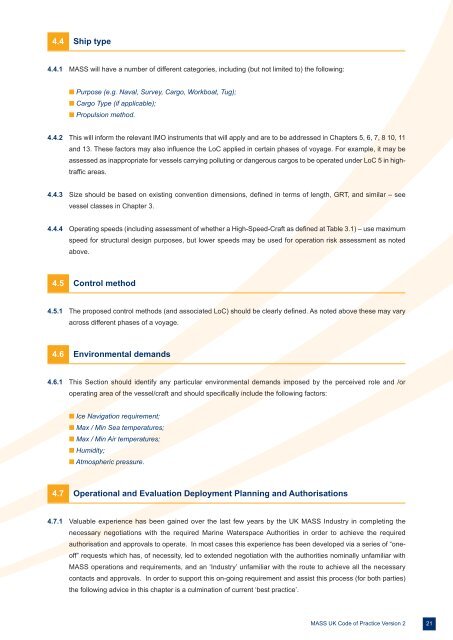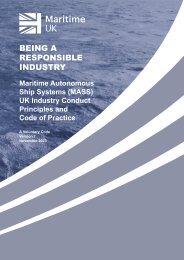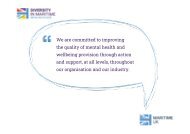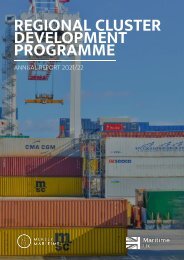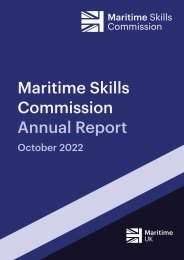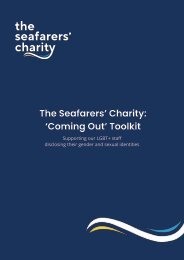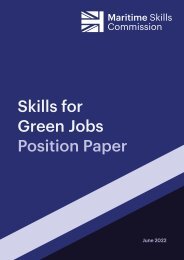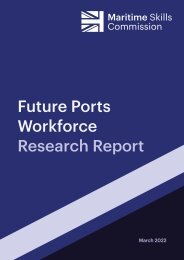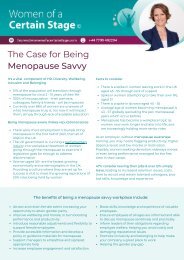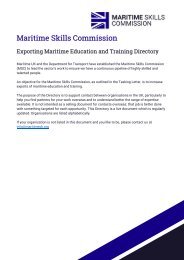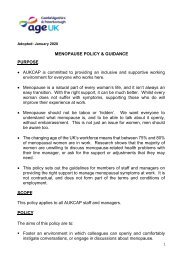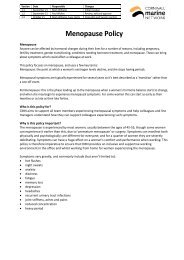Maritime UK MASS CoP v2
You also want an ePaper? Increase the reach of your titles
YUMPU automatically turns print PDFs into web optimized ePapers that Google loves.
4.4 Ship type<br />
4.4.1 <strong>MASS</strong> will have a number of different categories, including (but not limited to) the following:<br />
n Purpose (e.g. Naval, Survey, Cargo, Workboat, Tug);<br />
n Cargo Type (if applicable);<br />
n Propulsion method.<br />
4.4.2 This will inform the relevant IMO instruments that will apply and are to be addressed in Chapters 5, 6, 7, 8 10, 11<br />
and 13. These factors may also influence the LoC applied in certain phases of voyage. For example, it may be<br />
assessed as inappropriate for vessels carrying polluting or dangerous cargos to be operated under LoC 5 in hightraffic<br />
areas.<br />
4.4.3 Size should be based on existing convention dimensions, defined in terms of length, GRT, and similar – see<br />
vessel classes in Chapter 3.<br />
4.4.4 Operating speeds (including assessment of whether a High-Speed-Craft as defined at Table 3.1) – use maximum<br />
speed for structural design purposes, but lower speeds may be used for operation risk assessment as noted<br />
above.<br />
4.5 Control method<br />
4.5.1 The proposed control methods (and associated LoC) should be clearly defined. As noted above these may vary<br />
across different phases of a voyage.<br />
4.6 Environmental demands<br />
4.6.1 This Section should identify any particular environmental demands imposed by the perceived role and /or<br />
operating area of the vessel/craft and should specifically include the following factors:<br />
n Ice Navigation requirement;<br />
n Max / Min Sea temperatures;<br />
n Max / Min Air temperatures;<br />
n Humidity;<br />
n Atmospheric pressure.<br />
4.7 Operational and Evaluation Deployment Planning and Authorisations<br />
4.7.1 Valuable experience has been gained over the last few years by the <strong>UK</strong> <strong>MASS</strong> Industry in completing the<br />
necessary negotiations with the required Marine Waterspace Authorities in order to achieve the required<br />
authorisation and approvals to operate. In most cases this experience has been developed via a series of “oneoff”<br />
requests which has, of necessity, led to extended negotiation with the authorities nominally unfamiliar with<br />
<strong>MASS</strong> operations and requirements, and an ‘Industry’ unfamiliar with the route to achieve all the necessary<br />
contacts and approvals. In order to support this on-going requirement and assist this process (for both parties)<br />
the following advice in this chapter is a culmination of current ‘best practice’.<br />
<strong>MASS</strong> <strong>UK</strong> Code of Practice Version 2 21


